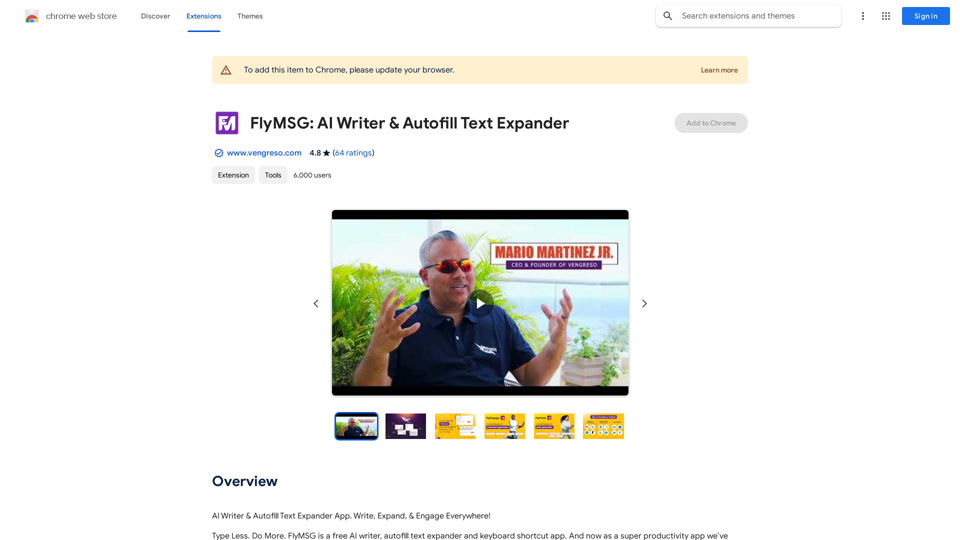TubeX is a free YouTube AI Copilot extension that enhances your YouTube experience by integrating Gemini AI and Google Translate. This open-source plugin leverages Google Translator, Gemini Pro 1.5, and Niu translator to process videos with AI, boosting learning and work efficiency on YouTube. TubeX offers features like subtitle export, real-time translation, word-by-word translation, theme customization, and AI-generated content about videos.
TubeX: Your YouTube AI Copilot (Free Tool)
Integrate the power of Gemini AI and Google Translate into your YouTube, making it a great tool for learning foreign languages
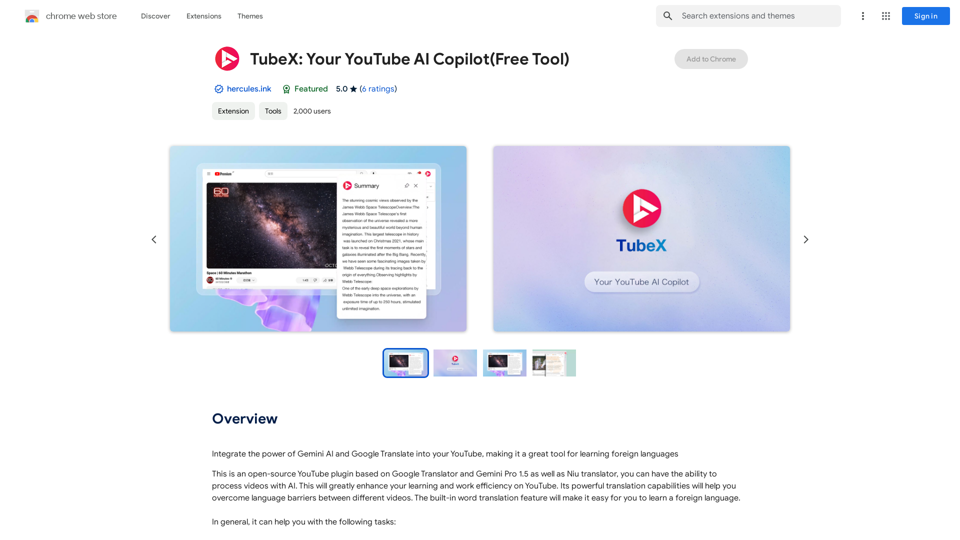
Introduction
Feature
Export Video Subtitles
TubeX allows users to export video subtitles in various formats, making it easier to access and use subtitle content for different purposes.
Real-time Subtitle Translation
The extension provides instant translation of subtitles, enabling users to understand videos in different languages effortlessly.
Word-by-word Subtitle Translation
TubeX offers a unique word-by-word translation feature for subtitles, which is particularly useful for language learners trying to understand the nuances of foreign languages.
Light and Dark Theme Support
Users can choose between light and dark themes, ensuring a comfortable viewing experience regardless of their preference or ambient lighting conditions.
AI-Generated Video Content
TubeX enables users to command AI to generate content about videos, making it an excellent tool for learning, research, and content creation.
Free to Use
TubeX is available as a free extension, allowing users to access its features without any subscription or payment requirements.
Multi-device Compatibility
Users can install and use TubeX on multiple devices, though the extension needs to be installed separately on each device.
FAQ
How do I install and use TubeX?
To use TubeX:
- Install the extension from the Chrome Web Store
- Open YouTube and navigate to your desired video
- Click the TubeX icon in the top right corner of the video player
- Select your preferred translation language
- TubeX will automatically translate the video subtitles in real-time
Is my data safe with TubeX?
TubeX does not collect or use your data for training purposes. Your data remains safe and secure when using the extension.
How can I report issues or request new features?
You can report issues or request features by:
- Contacting the developer directly
- Leaving a review on the Chrome Web Store
Are there any tips for getting the most out of TubeX?
- Ensure you have the latest version of TubeX installed for compatibility with YouTube updates
- Combine TubeX with other language learning tools for an enhanced learning experience
- Experiment with different languages and settings to find the optimal combination for your needs
Latest Traffic Insights
Monthly Visits
193.90 M
Bounce Rate
56.27%
Pages Per Visit
2.71
Time on Site(s)
115.91
Global Rank
-
Country Rank
-
Recent Visits
Traffic Sources
- Social Media:0.48%
- Paid Referrals:0.55%
- Email:0.15%
- Referrals:12.81%
- Search Engines:16.21%
- Direct:69.81%
Related Websites
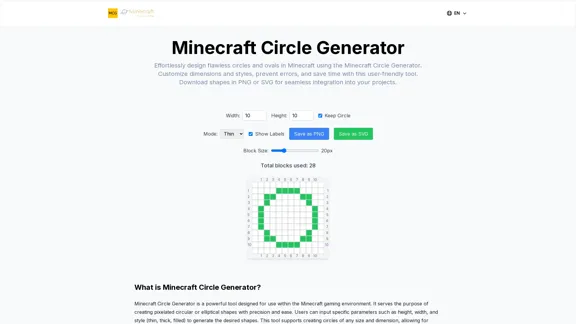
Here is the translation: Create Perfect Circles in Minecraft with Minecraft Circle Generator | minecraftcirclegenerate.cc
Here is the translation: Create Perfect Circles in Minecraft with Minecraft Circle Generator | minecraftcirclegenerate.ccCreate perfect circles and ovals in Minecraft with our easy-to-use generator. Customize size and style, then download your designs!
0

100% Free AI Image Generator: Text to Image Online | insMind
100% Free AI Image Generator: Text to Image Online | insMindLooking for a free AI image generator from text? Create stunning images with a simple text prompt using the most advanced AI text-to-image generator.
1.77 M
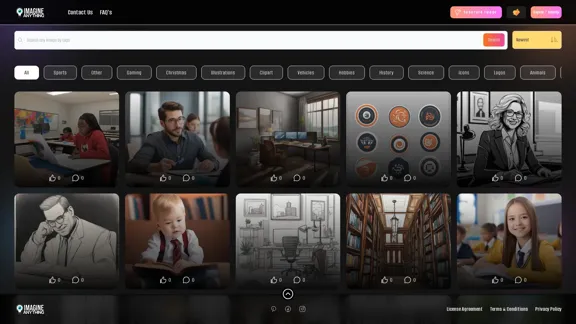
Generate Free AI Images with Imagine Anything. Easily create Photos, Clipart, Graphics and more with our AI Generator.
56.84 K

Create stunning Studio Ghibli style artwork using AI. Our text-to-image generator brings your imagination to life with the magical aesthetic of Ghibli animation.
0

Integrate the power of Gemini AI and Google Translate into your YouTube, making it a great tool for learning foreign languages
193.90 M

Free AI Photo Editor: Edit and Create Images Online
Free AI Photo Editor: Edit and Create Images OnlinePokecut is an AI-powered photo editor that transforms ordinary images into stunning masterpieces effortlessly. Remove backgrounds, enhance photos, and generate images online without signing up.
772.96 K
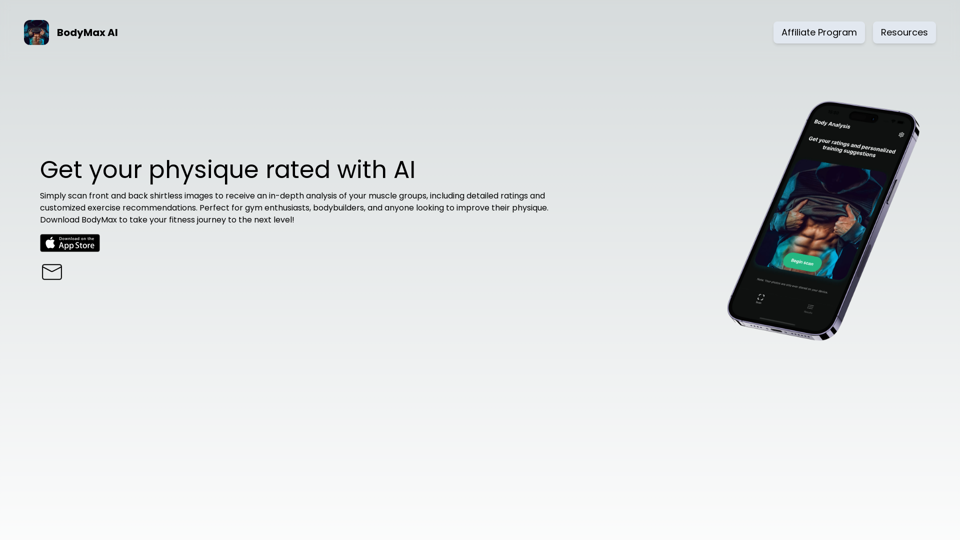
BodyMax AI - Get Your Physique Rating with our AI Body Scanner
BodyMax AI - Get Your Physique Rating with our AI Body ScannerEnhance your workouts with Artificial Intelligence! Get precise ratings for each muscle group, track your progress, and achieve your bodybuilding goals. Perfect for gym enthusiasts and bodybuilders. Download BodyMax to take your fitness journey to the next level!
283
